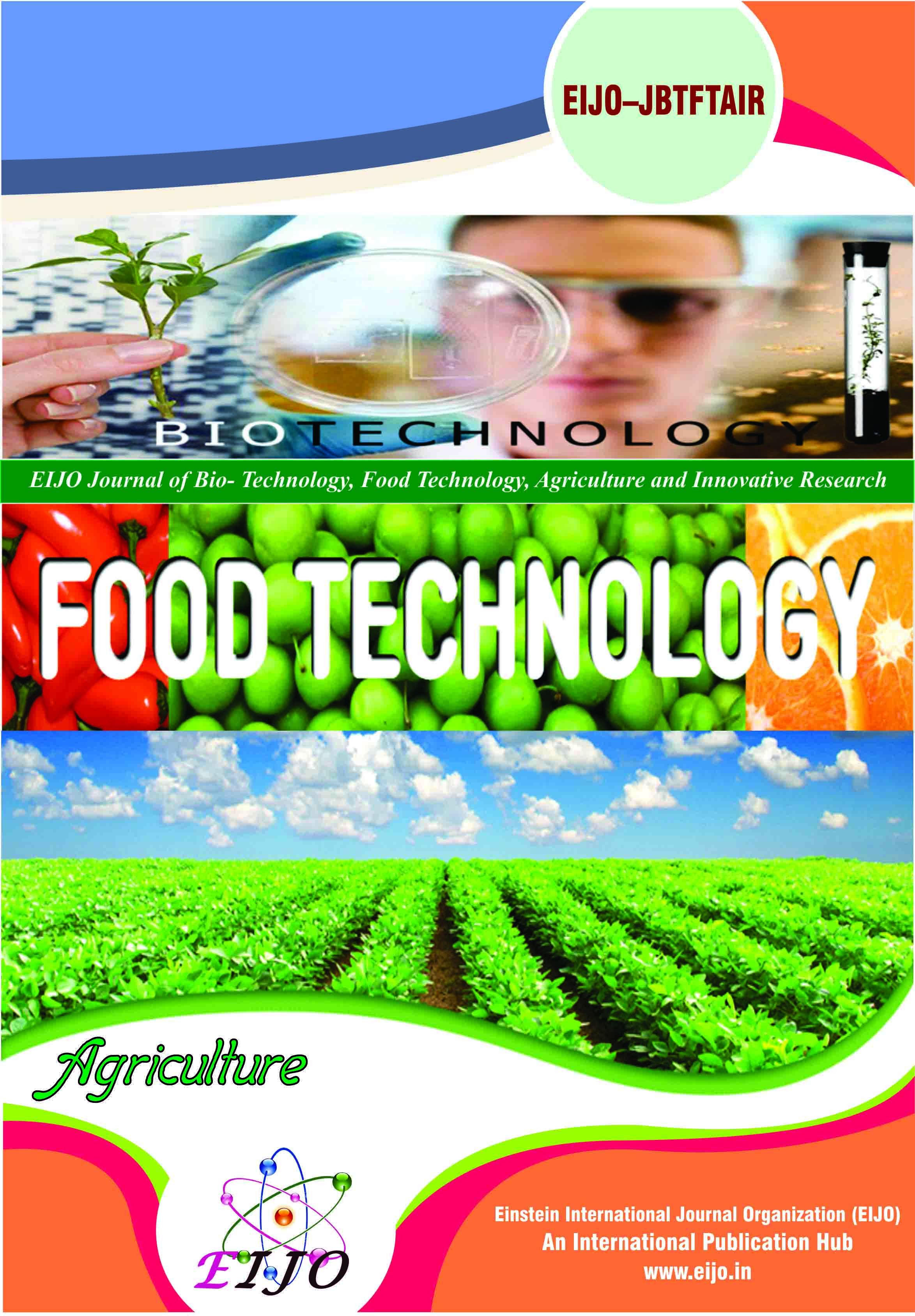JOURNALS || EIJO Journal of Bio- Technology, Food Technology, Agriculture and Innovative Research (EIJO – JBTFTAIR) [ISSN : 2455 - 992X ]
Salmonellosis considered one of the most serious infectious disease threats to public health on a global scale. World-wide typhoid fever affects about 6 million people with more than 600,000 deaths a year. Community base cross sectional descriptive study was carried out among the population in Abushouk Internal Displaced Persons camp (IDPs) Alfashir North Darfur State-Sudan, aimed to study Salmonellosis among the study population. The sample size of (399) households were taken by using systematic random sampling; the data was collected using structured questionnaire, and observation check list. Data were analyzed using SPSS version 16. The study revealed that, the prevalence of Salmonellosis was (9%) among the study population. Most of the infected respondents (40%) attained primary school level and (60%) had low income in average of (300-400) SDG. Most of the infected respondents (60%) were male and (40%) were in the age group (5-18) years old. The study showed poor environmental condition of the households, where most of the respondents (75%) were using local latrines, and observed that they were discharging waste in an open space in front of the houses and no policy for vector control activities seen. The knowledge toward Salmonellosis was good most of the respondents(74.6%) aware about the mode of transmission, but the hygiene practice was poor majority of the respondents (49.8%) were not using water and soap for hand washing after visiting toilet. The study recommended raising awareness toward prevention and control of Salmonellosis. Rehabilitation of the latrines and encourage community participation to maintain good hygiene condition of the latrines. Additional research to be carried out on screening tests for the detection of Salmonella typhi for those who are living in the study area for further study of prevalence of Salmonellosis.
Dedication
To my family
Acknowledgements
I take this opportunity to thank Allah for giving all the energy, ability and support both seen and unseen. My appreciation and acknowledgement to the Faculty of Health and Environmental Sciences. University of Gezira
Akinyemi K,; Smith S,; Oyefolu A, and Coker, A, (2005) Multidrug resistance in Salmonella enterica serovar typhi isolated from patients with typhoid fever complications in Lagos, Nigeria. Public Health. 2005; 119:321–327.
Alim Alwi,; Romi, and Marwni, (2009). International Journal of Tropical Medicine. Jeneponto sub district. Vo.4, Issue 3, page No 91-99.
Alam AY,;Adil MM, andQureshi A, (2008). Knowledge, Attitude and Practices Survey on Hygiene and There Impact on Health. RMJ. [cited October 29, 2014]; 33(1): 68-71.
Arlex Sanchez,; Kathleen Shordt, and MariellSnel, (2002). Review of school sanitation and hygiene education in developing countries.
Central for Disease Control and Prevention, (2005). Estimating the incidence of Typhoid fever and other febrile illness. Vol.9, No.5, editor@cdc.gov.
Charlie, Easmon, (2009), specialist adviser in tropical medicine. Control of Communicable Disease, Manual, 19th edition.
Chart H,; Cheesbrough J, and Waghorn, D,(2000). The serodiagnosis of infection with Salmonella typhi. Journal of Clinical Pathology. 2000; 53:851–853.
Connolly, T, (2005) Communicable disease control in emergencies. A field manual edited by NLM classification; WA110/WHO/CDC.
Crump J,; Luby S and Mintz, E, (2004) The global burden of typhoid fever. Bulletin of the World Health Organization.; 82:346–353.
Graham S,; Molyneux E,; Walsh A,; Cheesbrough J,; Molyneux M, and Hart, C, (2000). Non typhoidal Salmonella infections of children in tropical Africa. The Pediatric Infectious Diseases Journal; 19:1189–1196.
Jacob Michael, (1989). Safe Food Handling, Training Guide for Manager of Food Service Establishment. WHO. ISBN 924154245, CNLM classification.
James Chin, (2007). MD, MPH, Editor. Control of Communicable Disease, Manual, 17thedt. An official report of the American Public Health Association.
Jeremy, Hawker,; Norman, Begg,; Lain, Blair,; Raif, Reintjes, and Julus Weinberg (2005). Communicable Disease Control-hand book. New Delhi, India.2nd edition.
Kibiru Andrew, (2011). Risk factors influencing typhoid fever occurrence among the AdultsinMaina Slum, Nyahururn Municipality, Kenya.
Ministry of Health North Darfur State, (2014). Epidemiology & Health Statistics departments.
Moselio Schechter,; Gerald, and I, Eiscnstien, (1993). Mechanism of microbial disease. 428 East Preston, Street Baltimore, USA. 1993.
Moselio Schechter,; Gerald, and David Schlesinger (1989). Mechanism of microbial disease. 428 East Preston, Street Baltimore, USA.
Parks, (2009). Preventive and Social Medicine. India, 18th edition, p 206-208.
Plan Sudan Organization in partnership with Ministry of Health North Darfur. Environmental context in the IDPs camps (2014).
Roger Webber, (2012). Communicable Disease, a global perspective, 4th edition, page 101-103. British Library, London, UK.
Singh, (2007).Environmental and Social Development. India.
Smith,; Stella I,;Chimere O,;Agomo,; MosesBolanle O,;Pere O,;Olusimbo O, and Aboaba, (2010).Survey of Food Handlers.Bukas, Nigeria, University of Lagos @ copyright.
Theodor H,;Tulchisky,; Elena A, and Varavikova, (2009). New Public Health, page,177.
Tran HH,;Bjune G,; Nguyen BM,; Roottingen JA,; Grais RF, and Guerin PJ, (2005). Risk factors associated with typhoid fever in Son La Province, northern Vietnam.Tran R Soc Trop Med Hyg 99: 819-826.
Wallace Maxcy, (2008). Public Health and Preventive Medicine, 15 edition.
World Health Organization, (2010).Communicable disease control in emergencies.A field manual.



